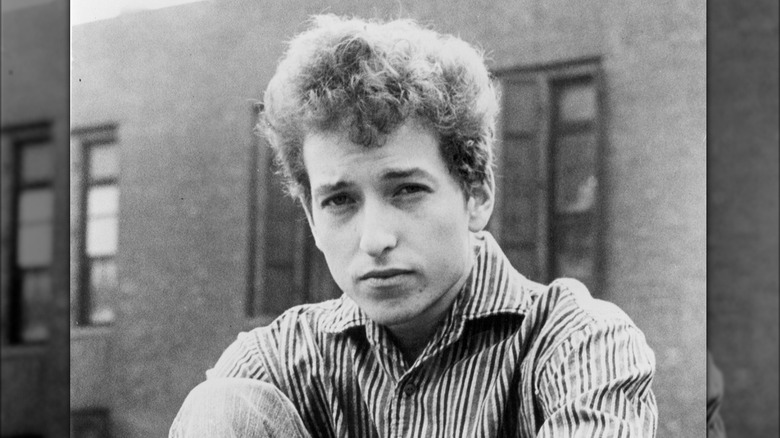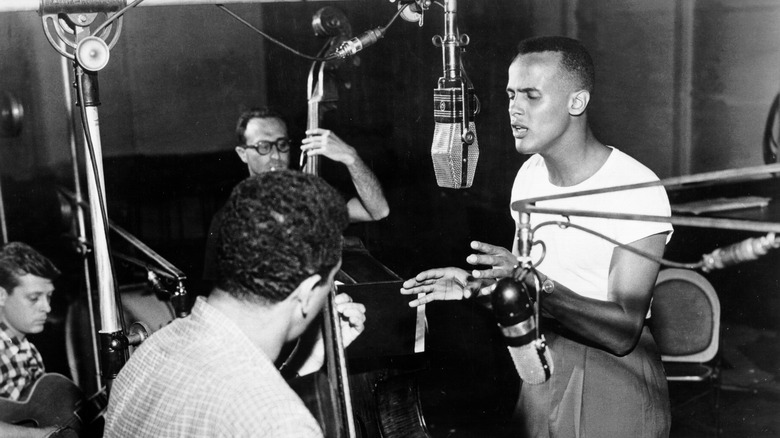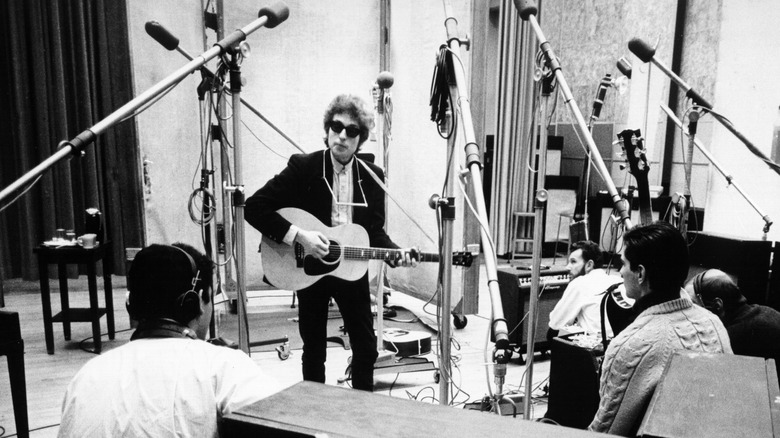Bob Dylan's Recording Debut Ended With Him Leaving After One Song
In the 1960s, the tradition of protest-infused American folk music found its heir. Woody Guthrie was aged and ill, and Pete Seeger, while of course still active and lauded, had been a folk staple since the 1940s but was in his 40s. Who would lead the next generation? Inspired by both singers, a young, scrawny Minnesotan named Bob Dylan went to New York City in late January 1961 with his guitar and harmonica and quickly took the world by storm (via Britannica).
There is something profoundly unique about Dylan's work. One cannot listen long before recognizing some kind of ascension beyond "musician" and "singer." Dylan is a poet. And this achievement was premeditated, as the young Bob Zimmerman took the name Dylan from the Welsh poet Dylan Thomas. His voice is strange — flat, boyish, gravelly, and yet beautiful. As Tim Grierson once put it in an article for Inside Hook, Dylan has the voice of the working man, lending a powerful authenticity to his ballads. But it was Dylan's harmonica that first got him into a recording studio.
Midnight Special
In New York, Bob Dylan's performances caught the attention of Harry Belafonte. Belafonte had been a hugely successful singer and actor for over a decade, and in the 1950s drifted from popular music into folk (via Biography). He needed a lively harmonica player for a song and found one in Dylan, albeit only after his first choice got sick. If you want to hear the first studio recording of Bob Dylan, listen to Belafonte's "Midnight Special." It opens loud with Dylan's instrumentals, but this fades softly into the background as Belafonte's silky voice sings: "Well I wake up in the morning / You hear the work bell ring ..." Dylan was paid $50 for his work, recording on April 24, 1961 (via Haaretz). He'd been in New York for just three months and he was already on a Belafonte album!
You sometimes hear that Dylan's first recording session was in September 1961 with folk artist Carolyn Hester (for instance in the New York Post). But Dylan wrote that his time with Belafonte was his "professional recording debut" in his memoir "Chronicles," and Belafonte echoed this in his own book, "My Song."
A Harmonica in the Water
In "My Song," Harry Belafonte wrote that Dylan entered the studio and dumped four or five harmonicas onto a table. He listened to Belafonte and the other musicians go through the piece. Then he dipped a harmonica in water for a rich sound and played the song with the band, delivering a perfect performance in one go. While leaving, Dylan, to Belafonte's astonishment, threw the harmonica in the trash. "I thought, Well, he certainly didn't think much of that song," Belafonte wrote. He imagined Dylan thought little of him. But he was "dead wrong," learning years later that the harmonicas were simply cheap, and once Dylan watered them they were no good, so he pitched them.
"Harry was the best balladeer in the land and everybody knew it," Dylan wrote in "Chronicles." "He was a fantastic artist ..." Dylan thought it "astounding" and "unbelievable" that his recording debut was with this famous singer and actor. He called it the "only one memorable recording date that would stand out in my mind for years to come. Even my own sessions would become lost in abstractions. With Belafonte I felt like I'd become anointed in some kind of way." The Belafonte album, also named "Midnight Special," came out in 1962. That same year, Dylan's first album was released, featuring "House of the Risin' Sun," "Man of Constant Sorrow," "Song to Woody," and other triumphs.


